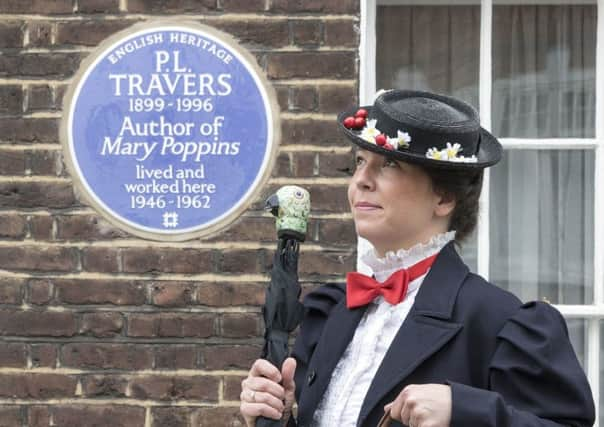Signs of the times as tributes to forgotten stars run into a brick wall


But the name of Bramwell Fletcher merits only a short footnote in theatrical history. And and in a further blow to his reputation, it emerges today, he had been denied a tribute half way up a wall.
He is among some three dozen once-famous but now all-but-forgotten figures who have been ruled not sufficiently significant to qualify for a blue plaque that would denote where they were born, lived or worked.
Advertisement
Hide AdAdvertisement
Hide AdEnglish Heritage, which oversees their issue, said its awarding panel had strict protocols on who could and could not be included.
It denied a plaque this year to Fletcher’s contemporary, the Hollywood actor Ronald Colman, who hailed from Richmond-on-Thames, but approved one for PL Travers, author of Mary Poppins and the subject of a movie about her association with Walt Disney, in which she was played by Emma Thompson.
“There is a set criteria that the panel uses as a yardstick to consider all nominations,” said Howard Spencer, senior historian at English Heritage. “The most important aspects of that is that person has to be of significant public standing and to have made a positive contribution to human welfare or happiness.
“We are looking for fame, not infamy.”
The organisation turned down requests last year for plaques in honour of the suffragists Eva Gore-Booth and Philippa Fawcett, despite launching a campaign to increase the number dedicated to women.
Advertisement
Hide AdAdvertisement
Hide AdThe Australian cricketer Albert Trott, thought to be the only batsman to have hit a ball clean over the pavilion at Lord’s, was another name struck out.
“In somewhere like cricket you have to be careful where you set the bar. You have to be very selective about it,” Mr Spencer said.
“With Trott, it was felt the most appropriate place to commemorate him was at Lord’s where he did his deed, and he may already be commemorated there.”
He said Ms Fawcett, daughter of the suffragist Millicent Fawcett, for whom a statue was unveiled in Westminster earlier this year, “didn’t quite match up to the early promise”. The first woman to be awarded a title equivalent to the male “Senior Wrangler” at her Cambridge University maths class, she became director of education at the old London County Council.
Advertisement
Hide AdAdvertisement
Hide Ad“You can’t commemorate someone on early promise,” Mr Spencer said.
English Heritage erects around 12 blue plaques in London every year, with other organisations placing them elsewhere. There are more than 900 in the capital, and up to 70 valid nominations are received each year, but three-quarters are turned down.
Bramwell Fletcher, born in Bradford in 1904, moved with his family to London as a child. Put to work at 15 as an office boy, he talked his way into the theatre and films, and appeared as a juvenile in the last silent movie and the first talkie produced in Britain. In the 1928 film, Chick, he plays Chick Beane, a Cockney who inherits a title and marries a girl posing as a widow.
He travelled to the US with his friend, Laurence Olivier, in the early 1930s and appeared opposite Boris Karloff in The Mummy, in 1932. He also starred in Svengali alongside John Barrymore, and briefly married Barrymore’s daughter, Diana, whose niece is the present-day star, Drew Barrymore.